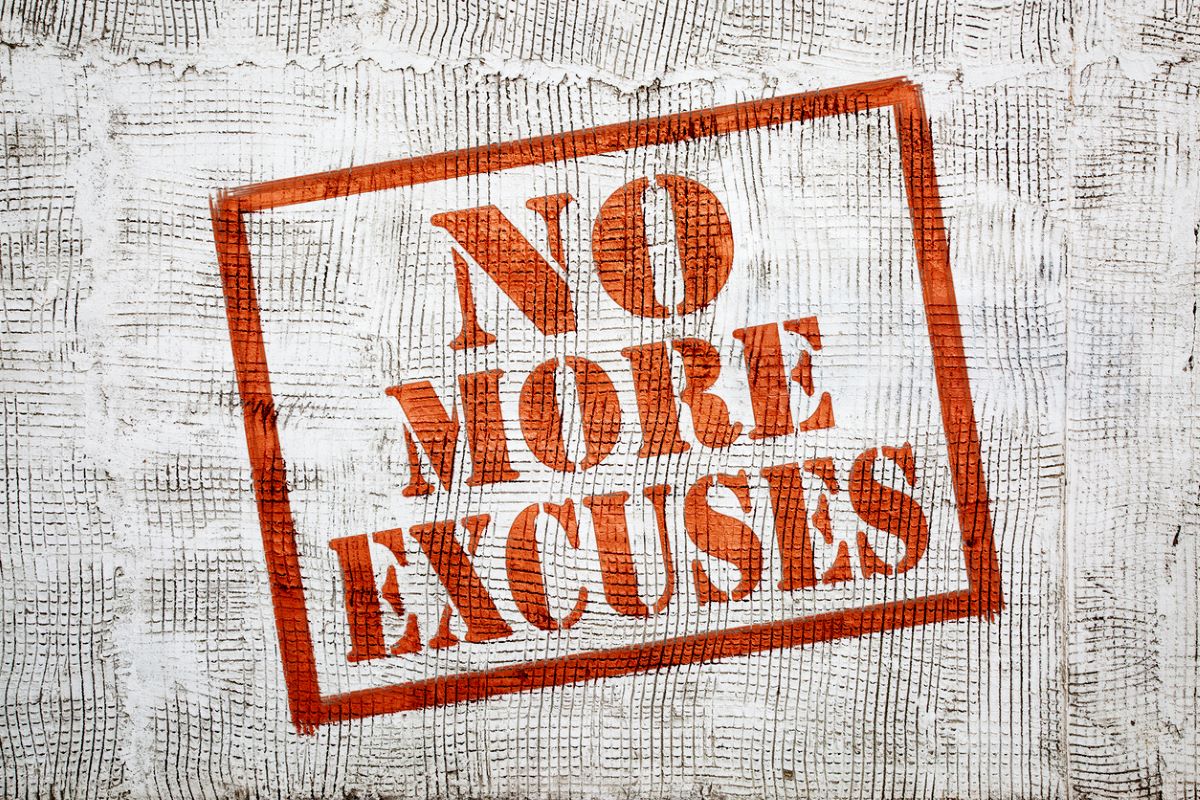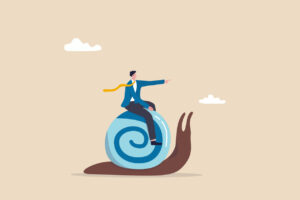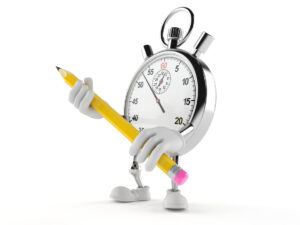18 ideas to punch up productivity
Try these methods to thwart procrastination and reach your desired efficiency destination.

Productivity is your very own renewable power source. But it takes strategy, experimentation and fresh tactics to stay fueled and motivated.
Here are 18 ideas to try:
1. Choose your own task prioritization method.
I’ve learned a lot from former Dwight D. Eisenhower and the popular Eisenhower Matrix.

Image via Luxafor
Creating a visual hierarchy of this nature can help you rank tasks in order of priority, but there are plenty of other options out there, such as:
Two Big Traps
“Be sure to watch out for ‘decibel prioritization,’ in which the loudest voice heard gets top priority, and ‘threat prioritization,’ in which stakeholders holding the most political power always get what they demand,” writes Karl Wiegers in a Medium post. “These traps can skew the process away from addressing your true business objectives.”
In or Out
“The simplest method is for a group of stakeholders to work down a list of requirements and decide for each if it’s in or it’s out,” states Wiegers. Using the project’s business objectives as a guide, pare down each task to the absolute minimum required for the first release.
“When that iteration is underway, you can go back to the previously ‘out’ requirements and repeat the process for the next cycle,” he adds. “This is a simple approach to managing an agile backlog of user stories, provided the list of pending requirements isn’t too enormous.”
Pairwise Comparison and Rank Ordering
Priority sequence numbers are sometimes assigned to requirements. Rank ordering involves comparing all the needs pairwise to see which one is more important. Over a few dozen criteria, however, this becomes cumbersome. As a whole, it might not cover all the requirements for a system of this size, but it may work for granularity.
“Rank ordering all requirements by priority is overkill, as you won’t be releasing them all individually,” explains Wiegers. Instead, it’s best to organize them by release or development iteration. The dividing of requirements into features, or into small groups of conditions that share the same priority or need to be implemented together, is sufficient in most cases.
Three-Level Scale
“A common approach groups requirements into three priority categories,” he writes. When you use three categories, you will have high, medium and low priorities. They are typically subjective and imprecise. Each level in the scale must represent a specific outcome that the stakeholders can agree on.
“I like to consider the two dimensions of importance and urgency,” Wiegers suggests. “Every requirement can be considered as being either important to achieving business objectives or not so important and as being either urgent or not so urgent.” It’s a relative assessment of a set of requirements, not an absolute comparison.
MoSCoW
A MoSCoW priority scheme is divided into four different categories indicated by capital letters:
- Must: The requirement must be met for the solution to be deemed successful.
- Should: The requirement is crucial to success, but it is not essential.
- The capability is desirable, but it can be delayed or eliminated. If resources and time permit, implement it.
- Won’t: A requirement that won’t be implemented at present but may be implemented in a later version.
2. Break the procrastination and perfectionism loop.
Procrastination and perfectionism not only thwart productivity, they can also impede innovation and even cause anxiety and depression.
If you want to break free from the destructive procrastination and perfectionism loop, try these tips from writer Deanna Ritchie:
- Keep your tasks bite-sized and achievable.
- Focus on one thing at a time.
- Practice self-compassion.
- Surround yourself with positive support.
- Incorporate mindfulness into your workday.
- Reduce your commitments.
- Reward yourself.
- Track your time.
3. Get your body moving.
If you feel sluggish all of the time, you likely won’t have the energy and stamina to make it through a full day of work.
You could switch to a standing desk, encourage your colleagues to have walking meetings, take breaks to play with your kids or dog, or launch a fitness challenge. You could also get creative but doing heel-raises while making coffee or squats while folding the laundry.
Just do something — absolutely anything to keep your body moving during the day.
4. Dilute micro-distractions.
“We are an over-connected society which is addicted to our devices and a slave to our notifications,” writes resilience keynote speaker Heidi Dening.
Humans are not wired to switch tasks constantly, so we cannot focus if we’re being interrupted constantly by beeps, tweets, pop-up windows and email pings.
“The number one adjustment you can make that has massive impacts to your productivity is to turn off the sounds and notifications on your devices,” suggests Dening. “Now, if this statement has scared you because you realize you are addicted to being notified when someone likes, comments, re-tweets, or contacts you, then take it one step at a time.”
- For the first week, turn off the sounds on your devices.
- Then turn your email pop-up off for the following week.
- Once that is done, turn your social media feeds off for the following week.
“If you take little steps, it won’t seem so overwhelming, and you can test the impact these small modifications have on your productivity, she adds.
5. Try intelligent planning.
Researchers have found that working in chunks of 90 minutes or less is key to optimizing productivity.
The reason? You need breaks to rest, recharge and clear your mind. Overall, this keeps your concentration and performance high. Furthermore, breaks can be beneficial for your physical and mental health as well.
6. Suck it up and ask for help.
There’s no shame in asking for assistance. It’s not a sign of weakness; it’s a strength, because it demonstrates self-assurance, honesty and trust. It’s also a surefire way to gain new perspectives and insights.
Research shows that asking for help develops resilience and relationships, and is a sign of high performers.
7. Create a productivity playlist.
Focus on these mind-boosting genres:
- Classical. A literature review stated that listening to music by Mozart improved short-term spatial-temporal reasoning.
- Coffee shop sounds. According to a study published in the Journal of Consumer Research, medium levels of ambient noise increased creativity.
- Ambient music. Spotify surveyed 4,000 adults from the U.S. and UK in 2021, and 69% of them said ambient music works best for study, with 67% saying slower beats are essential.
- Upbeat tracks. Listening to high-tempo music (170-190 bpm) enhanced athletic performance, according to a study published in Frontiers in Psychology in 2020. Does this translate to productivity? It’s worth a try. It’s worth a try.
- Nature sounds. According to a study by the Acoustical Society of America, in an open-plan office, the sound of a flowing mountain stream significantly increased workers’ mood and productivity.
- Pink and white noise. One study published in Scientific Reports found that listening to white noise while learning new words resulted in greater recall than listening to silence. White noise may enhance the acquisition of new words, according to the researchers.
8. Go on a productivity purge.
A productivity purge was popularized by Cal Newport and is based on the Einstein Principle.
Newport points out that Einstein’s primary focus from 1912 to 1915 was his theory of relativity. Despite many sacrifices that come from such a narrow focus, Einstein produced one of history’s most significant scientific works.
“We are most productive when we focus on a very small number of projects on which we can devote a large amount of attention,” explains Newport. “Achievements worth achieving require hard work. There is no shortcut here.”
9. Rethink what you eat.
Junk food affects more than just your weight. Eating lousy food can cause energy crashes and decreased productivity.
So, keep plenty of nutritious, energy-packed snacks nearby to remain productive throughout the day.
10. Identify your productivity ebb and flows.
Everybody has times when they are more productive than others. Identify these times via a productivity journal or time tracker, and plan your most challenging tasks around them. Then, in the other times, just complete the tasks that are simpler or of lower difficulty.
11. Improve your work environment.
Don’t neglect your workplace. Regardless of where it is, keep your workspace clean, tidy and organized. You also might want to spruce it up with a standing desk, plants and pictures of loved ones to maintain your motivation.
12. Focus on meaningful work.
People who find meaning in their work tend to be more motivated, engaged and empowered on the job, all while enjoying greater career fulfillment and job satisfaction.
How can you find meaningful work? One suggestion would be doing what you love. Or, at least try to find passion in certain aspects of your job, such as helping others or connecting people from diverse backgrounds.
Much of this comes down to attitude. Not every job is a “dream job,” but there are always opportunities to find deeper meaning and satisfaction.
13. Become a master-batcher.
One study found that focusing on more than one thing at a time reduces productivity by 40%.
Peter Bregman explains why in a piece for The Harvard Business Review. See, we’re not really multitasking. Instead, “We switch-task, rapidly shifting from one thing to another, interrupting ourselves unproductively, and losing time in the process.”
Rather than focusing on one thing at a time, group together similar tasks and complete them all at once. As an example, instead of checking your inbox every time you receive a notification, you would check your emails three times a day, like in the morning, after lunch or before you quit for the day.
14. Eliminate limiting beliefs.
Are you concerned about some hypothetical situation that has yet to happen? Are there constantly negative thoughts weighing on your mind?
Put an end to these negative habits and beliefs. Be proactive about thinking positively. Give yourself grace, and don’t beat yourself about perceived failures.
If you want to remove negative thoughts and instill empowering ones, one suggestion is referring to Day 26 and 27 of Be a Better Me in 30 Days Program.
15. Use a “blast-off” method.
It’s rare for us to have enough time to finish everything on our plates in a single day. Especially if we aren’t inspired to do it. As a result, we procrastinate.
The Five-Second Rule is a method that says you should count down 5-4-3-2-1 before starting a challenging task. Developed by entrepreneur Mel Robbins, this allows you to be more in control.
You can also succeed in any task by following the Five Second Rule. And, your sense of accomplishment will be palpable, and you’ll be inspired to keep going.
16. Challenge your mind.
The troubling lack of inspiration mentioned earlier shouldn’t keep you from starting your day on the right foot. Rather than allowing others to deal with that problem for you, take matters into your own hands by challenging yourself with intellectual challenges like Sudoku or crossword puzzles.
17. Delegate like a boss.
Are you ever unsure of how you’ll possibly accomplish all the tasks on your to-do list?
Most of those low-value tasks can be outsourced, I’m sure. We’re looking at you, data entry, document formatting and running errands.
Thanks to the internet, you can outsource these tedious tasks so that you spend more time on what’s truly important. Find out what you could outsource by checking out TaskRabbit, Fiverr or Upwork.
18. Chronicle your development and achievements.
You could do this at the end of every day. But if that’s too laborious, try doing it weekly.
Regardless of how often you do this activity, the idea is the same. Take a couple of minutes to take note of your specific accomplishments. Even the small wins.
It sounds simple, but tracking victories is a great way to acknowledge what you’re good at and to note personal progress. In turn, this will make you more self-confident and keep the motivation train rolling.
John Rampton is the founder Calendar and Due.






